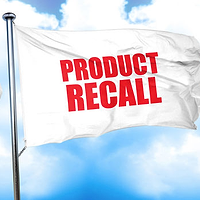Traceability Is Not a Substitute for Transparency in the Recipe for Food Company Success

The Food Safety Modernization Act (FSMA) places primary responsibility for food safety on manufacturers, producers, processors and other members of the food supply chain. “Think of [FSMA] as supply-chain management written into law,” U.S. Food and Drug Administration (FDA) Deputy Commissioner Michael Taylor told the New England Journal of Medicine in September 2011. But with increasingly global and complex supply chains, food companies face unprecedented challenges in complying with the law. Supply chain relationships, whether domestic or international, can be difficult, and FSMA is likely to complicate interactions that already are complex.
Traceability—product tracking—is designed to help food companies manage those relationships, safeguard their food supply chains and protect their brands. Of course, imposition of a traceability requirement also is intended to protect consumers and guarantee product authenticity and to assist government agencies in the event food safety or other health-related issues arise that require a government agency to quickly identify or recall tainted food and warn the public of an attendant health threat. Traceability goes hand-in-hand with recordkeeping. That is, effective traceability relies on reliable, readily accessible records that detail from where a food company obtained each particular food product, what the company did with that product internally, and to whom the company distributed that product or a different food incorporating that product.
Presently, U.S. law requires only that each handler of food products in the supply chain establish and maintain protocols that track and document movement of its products both one step forward (i.e., distribution to customer) and one step back (i.e., purchase from vendor). That has been the rule since enactment of the Bioterrorism Act of 2002, and FSMA does not change the “one up, one back” concept. Rather, it directs FDA to study ways to make traceability more effective, to analyze the practices and technologies that facilitate traceability and to assess the cost/benefit of those practices and technologies. Ultimately, the goal is to determine how, practically and economically, a product’s history from farm or point of production to fork, including all processes that transform it, can be determined and recorded.
Effective and economical traceability is no small feat. In August 2014, a report issued that concludes that despite its renewed focus on food safety, the U.S. does not possess the most comprehensive or effective regulations and requirements regarding traceability. According to the report, that distinction presently belongs generally to the European Union (EU) member states and the European Free Trade Association (EFTA) countries of Norway and Sweden. Entitled “Comparison of Global Food Traceability Regulations and Requirements,” and published in Comprehensive Reviews of Food Science and Food Safety, 13(5):1104–1123 (September 2014), the report indicates that the traceability regulations and requirements imposed on EU and EFTA countries rank “superior,” whereas those imposed on U.S. companies are “average.” A copy of the report is found at the following link: onlinelibrary.wiley.com/doi/10.1111/1541-4337.12101/full.
In reaching their conclusions, the authors of the report analyzed data corresponding to the following questions:
• Are there specific regulations/policies on the national level for domestic products? When did these policies come into effect?
• Are there specific regulations/policies for imported products? What documents are required for import products to address traceability?
• What is the clarity of the systems of authority responsible for traceability regulations?
• If there are no specific governmental regulations, are there voluntary practices by industry?
• What products or commodities are being regulated for traceability?
• What kinds of identifiers are being used for tracking/registering of imports (e.g., ear tags, barcodes, RFID)
• Are GFSI benchmark standards recognized?
• Are GS1 services (i.e., traceability tools and coding standards) available?
• Is there an electronic database system used for monitoring imports/exports and their traceability? Are these systems accessible by importing countries?
• What information on packaging labels is available for the consumer to understand traceability?
Aside from rating traceability requirements individual countries considered, the authors conclude that a uniform traceability system based on the EU model would be advantageous to furthering the efficacy of traceability efforts:
It would be very beneficial for global markets if countries would move toward the development of an interoperable and uniform global traceability system by following the examples of the EU, and developing uniform requirements for electronic identification, database systems, and interoperability coupled with and supported by globally recognized identification standards and auditing schemes.
As we learned from the horse meat scandal that rocked Europe last year, however, even uniform traceability regulations that garner a superior rating may have their limitations. European companies with sophisticated tracking systems and protocols were ensnared by fraudsters who used horse meat to turn a far reaching ground beef, multi-country supply chain into a massive swindle that kindled a social media firestorm, tarnished hard-earned brand reputations and caused enormous losses.
The lesson? Any supply relationship is fraught with risk. The answer? Transparency. Stated otherwise, do you know with whom you are dealing? And, do you trust them?
Like traceability, achieving transparency is no easy feat, especially where a supply chain is complex. As an initial matter, food companies should assess from both economic and practical perspectives whether they can simplify their supply chains. Typically, it is easier to achieve transparency where a supply chain is short. But regardless of a chain’s length, the considerations are the same. To achieve supply relationship transparency, a company must do the following:
• Carefully conduct due diligence in preparation for a supply relationship, including the supply partners of the would-be direct supplier, including analysis of whether the suppliers’ operations comply with FSMA and other food safety requirements
• Thoughtfully negotiate and precisely draft the supply agreement, including establishment of clear expectations and metrics by which the relationship will be evaluated and, if necessary, amended or terminated
• Vigilantly manage and oversee its supply partners, including, if necessary, their supply partners
Each undertaking is itself complex and multi-faceted, the exact parameters of which will depend on the nature, length and complexity of the supply chain and the business needs of the purchaser. But one critical question remains constant under any circumstance: With whom are you dealing?
John T. Shapiro is partner and member of the Food Industry Team at Freeborn & Peters LLP (Chicago).
>
Looking for a reprint of this article?
From high-res PDFs to custom plaques, order your copy today!






